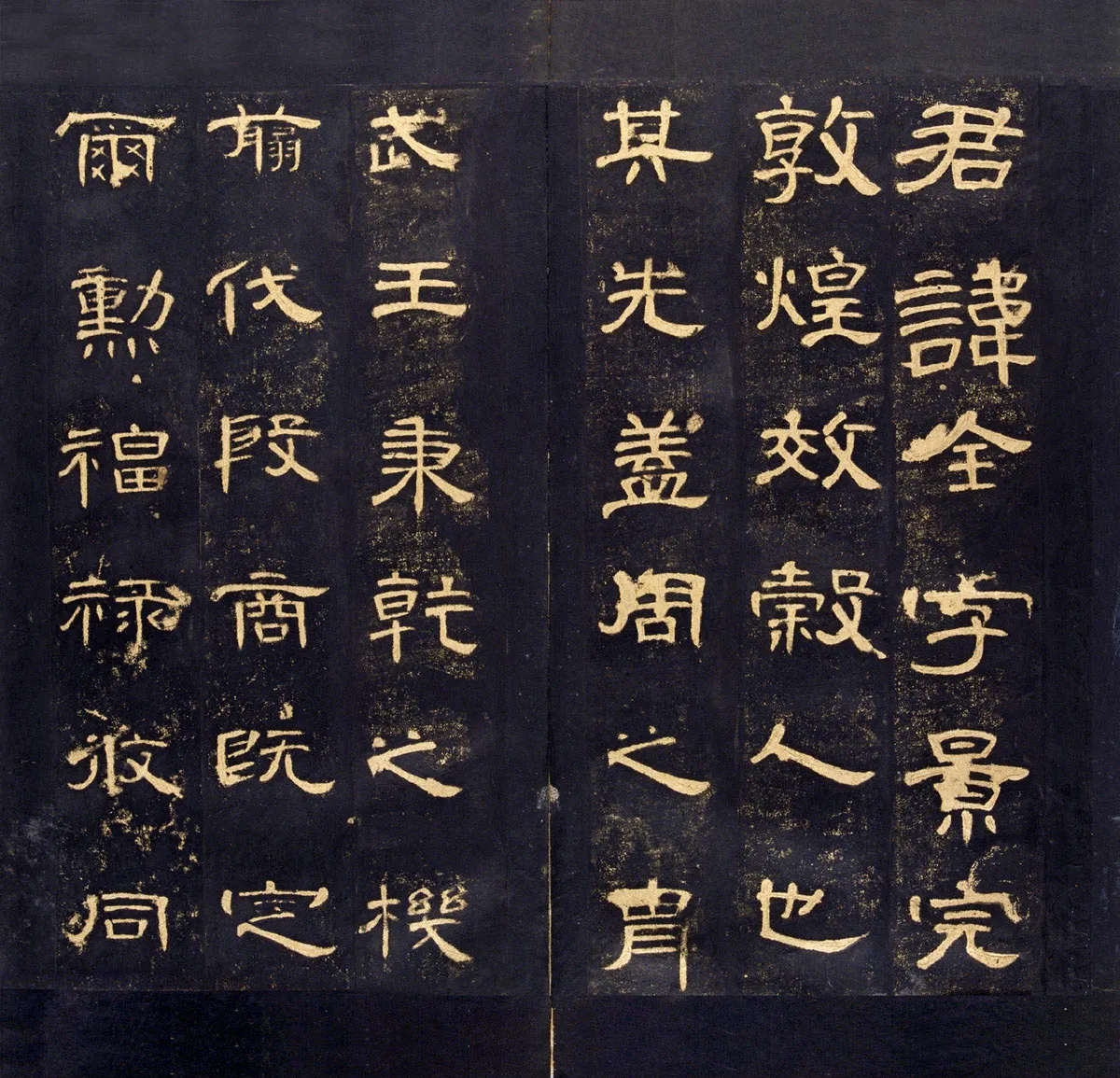
Top left: “Clerical” written in Clerical Script; Top right: “Clerical” written in Seal Script; Bottom left: “Seal” written in Seal Script; Bottom right: “Seal” written in Clerical Script.
Today we’re going to delve into the remaining two of the five styles: Seal Script and Clerical Script. Both of these scripts have very different foundational strokes compared to the other styles. Therefore some practitioners start directly with them upon first learning calligraphy. There’s nothing wrong with that if you have a strong preference for one of these styles or have a specific goal, but for the generally curious, Regular Script is still the best place to start given its wide adoption, and the characters’ recognizability.
Seal Script
Seal Script is commonly separated into two main categories: Large Seal Script and Small Seal Script. If you haven’t already, check out the fourth post of this series to learn about the history and differences between the two Seal Scripts. It is most common to start with Small Seal Script when first learning the style.
One of the most important underlying concepts for writing Seal Script strokes well is 中鋒 (pronounced as “Zhong Fong”, meaning “center tip”). 鋒 (Fong) refers to the tip of the calligraphy brush, and center tip refers to keeping the tip in the middle of the stroke as you’re writing it. This ensures the balance of the stroke (there’d be an equal amount of ink seeping to both sides of the tip), and usually gives the final stroke a full and steady feel.

The one on top demonstrates writing with center tip, in contrast with the bottom slanted tip, where the tip of the brush is slanted to one side, instead of being in the middle of the stroke
Aside from center tip, another major characteristic of Seal Script strokes are their rounded beginnings and endings. Check out this post which goes through each basic stroke in Seal Script, and has illustrations on the paths the brush should take in order to achieve the roundedness. And take a look at this video for live demonstrations of these strokes and how they are combined into characters.
Speaking of characters, as you’ve probably noticed by now, Seal Script characters look very different from their Regular Script counterparts. Therefore another important thing one must do from the start is to learn these characters. Shuowen Jiezi (說文解字), an ancient Small Seal Script Chinese dictionary from the Han dynasty, written by scholar Xu Shen (許慎), is the best source for learning these characters. You can find the complete list on this Wikipedia page, or on this interactive site.
And below are a few iconic Seal Script works / copybooks to learn from (the first two are Small Seal Script, and the last one Large Seal Script):
- Stone Carvings on Mount Tai (泰山石刻) by Li Si (李斯)

- Langye Engravings (琅琊台刻石) also by Li Si (李斯)

- Inscriptions on drum-shaped stone blocks (石鼓文)

Clerical Script
Though characters in Clerical Script are mostly the same as Regular Script, this style’s strokes also has its own unique characteristics. 蠶頭雁尾 (pronounced as “tsan tou yan wei”, meaning “the head of a silk worm and the tail of a wild goose”), is commonly used to describe the form of the horizontal stroke in Clerical Script. Check out this article for live demonstrations of the various basic strokes in Clerical Script.

As for representative works and copybooks that are great to learn from:
- 曹全碑 (Cao Quan Bei), inscription from the Han Dynasty

- 史晨碑 (Shi Chen Bei), inscription from the Han Dynasty

- 張遷碑 (Zhang Qian Bei), inscription from the Han Dynasty

That’s a wrap to styles deep dive! Have you already found your favorite, or know which one you’d like to start with first? Comment and let us know. One last tip I’ll leave you with — as enticing as it may be to want to try your hands on all of them at once, it’s best to pick one and stick with it when you’re just starting off, as it usually takes years of practice to get even a relatively good grasp on any of these styles.
In the next post, we’re moving on from drier technical information to fun stories! I’ll share historic tales of Chinese calligraphers that I learned growing up, many of which continue to motivate me up to this day, and remind me of how I fell in love with calligraphy in the first place. See you in July 🔆